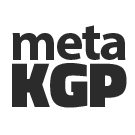IM21002: Production Design And Process Planning
| IM21002 | |||||||||||||||||||||||||||||
|---|---|---|---|---|---|---|---|---|---|---|---|---|---|---|---|---|---|---|---|---|---|---|---|---|---|---|---|---|---|
| Course name | Production Design And Process Planning | ||||||||||||||||||||||||||||
| Offered by | Industrial & Systems Engineering | ||||||||||||||||||||||||||||
| Credits | 4 | ||||||||||||||||||||||||||||
| L-T-P | 3-1-0 | ||||||||||||||||||||||||||||
| Previous Year Grade Distribution | |||||||||||||||||||||||||||||
| |||||||||||||||||||||||||||||
| Semester | Spring | ||||||||||||||||||||||||||||
Syllabus
Syllabus mentioned in ERP
Prerequisites: IM21003 Operations Research-1 Introduction: Four plane concept of manufacturing – planning, control, material flow, and manufacturing process. Control loop of a manufacturing system. Basic functions of a manufacturing facility for small- and medium-size production runs. Functions of a computer an a manufacturing organization. Concurrent Engineering: Sequential versus concurrent engineering, mathematical model for interactions between design and manufacturing, benefits of CE, characterization of CE environment, framework for integration of life-cycle phases in CE, CE techniques, difficulties associated with CE, examples. Automated Material Handling and Storage Systems: Principles of MH, MH equipment, types and components of AGVS, automated storage and retrieval systems, distributed computer control architecture for AGVS and AS/RS, conveyors. Robotic Systems: Fundamentals of robotics and its technology, robot classification, robot motion analysis, robot selection and its application, economic justification of robots. Numerical Control: Conventional numerical control (NC) – basic components of an NC system, applications of NC, economics of NC, and problems with conventional NC. Computer Numerical Control (CNC), Direct Numerical Control (DNC), and combined CNC/DNC systems. NC programming. Process Planning: Manufacturing environment for process planning. Generative process planning, variant process planning, and CAPP system. Computer-aided generation of process plans. Group Technology, CMS, and MRP: Classification methods – OPITZ , CODE, and MICLASS systems. Master production schedule. Material Requirements Planning (MRP). Manufacturing Resources Planning (MRP-II)–capacity requirement planning, order release planning, and operations sequencing. Group scheduling in MRP-II environment. Introduction to JIT-based techniques. Flexible Manufacturing Systems: Types of flexibility, key characteristics, basic features of physical components of FMS, control components of FMS, operational problems and layout considerations, simulation modeling and FMS benefits. JIT Manufacturing Systems: Overview of TPS, pull versus push system, types of kanban, kanban planning and control models – deterministic and probabilistic models, signal kanban, other types of kanbans, alternative JIT systems, JIT purchasing, barriers to and benefits of JIT implementation, examples. Textbook •Groover, M.P. and Zimmers, E.W. Jr., CAD/CAM: Computer-aided Design and Manufacturing, Prentice-Hall of India Private Ltd, New Delhi, ISBN 0-87692402-10, 1986.
�References •Halevi, G., The Role of Computers in Manufacturing Processes, John Wiley. •Orlicky, J., Material Requirements Planning, McGraw-Hill. •Koren, Y., Computer Control of Manufacturing Systems, McGraw-Hill. •Vail, P.S., Computer Integrated Manufacturing, PWS-KENT Publishing Co. •Rembold,U., Blume, C. and Dillmann, R., Computer Integrated Manufacturing Technologyand Systems, Marcel Dekker. •Hyde, W.F., Improving Productivity by Classification, Coding, and Database Standardization, Marcel Dekker. •Noori, H., Managing the Dynamics of New Technology: Issues in Manufacturing Management, Prentice-Hall.
